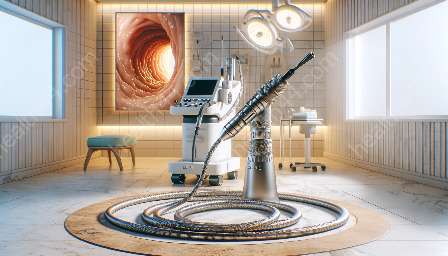The medical field is constantly evolving, and with the advent of cutting-edge technology, procedures that were once invasive and complex have become less invasive and easier for both physicians and patients. In this article, we will delve into the fascinating world of endoscopic mechanical dilators, exploring their compatibility with endoscopes and their significance in the realm of medical devices and equipment.
Understanding Endoscopic Mechanical Dilators
Endoscopic mechanical dilators are medical devices used to widen narrow or obstructed anatomical pathways within the body. They are commonly employed in various medical procedures, particularly gastrointestinal and pulmonological interventions. By using endoscopic mechanical dilators, physicians can effectively treat strictures, stenoses, and other conditions that cause narrowing of the body’s passages.
These innovative devices are designed to be used in conjunction with endoscopes, which are long, thin, flexible instruments equipped with a light and camera at their tip. Endoscopes allow physicians to visualize the inside of the body and perform diagnostic and therapeutic procedures with minimal invasiveness.
Compatibility with Endoscopes
One of the key features of endoscopic mechanical dilators is their compatibility with endoscopes. This compatibility enables physicians to perform dilation procedures under direct visualization, ensuring precision and safety. The endoscope provides real-time imaging, allowing the physician to accurately position and deploy the dilator, resulting in optimal outcomes for the patient.
Furthermore, the integration of endoscopic mechanical dilators with endoscopes has expanded the scope of procedures that can be performed endoscopically. This synergy has notably contributed to the advancement of minimally invasive techniques, reducing patient discomfort and recovery times.
Medical Devices & Equipment: The Role of Endoscopic Mechanical Dilators
Within the domain of medical devices and equipment, endoscopic mechanical dilators play a crucial role in enhancing the efficacy and safety of various procedures. They are instrumental in the management of gastrointestinal disorders such as strictures, tumors, and achalasia, as well as in the treatment of pulmonary conditions like tracheal and bronchial stenoses.
With their compatibility with endoscopes, endoscopic mechanical dilators have revolutionized the approach to treating these conditions. The ability to perform dilation procedures endoscopically has reduced the need for traditional surgical interventions, leading to shorter hospital stays and faster recovery times for patients. Additionally, the minimally invasive nature of these procedures reduces the risk of complications, making them a preferred choice for both physicians and patients.
Advancements in Endoscopic Mechanical Dilators
The field of endoscopic mechanical dilators continues to see significant advancements, driven by the relentless pursuit of improving patient outcomes and procedural efficiency. Modern devices are designed with features such as improved maneuverability, enhanced visualization, and the ability to deliver targeted dilation with precision.
Moreover, ongoing research and development in materials and technology have led to the creation of dilators with customizable properties, allowing physicians to tailor the dilation process to each patient's specific anatomical requirements. These advancements have expanded the applicability of endoscopic mechanical dilators, further solidifying their position as indispensable tools in the medical professional’s repertoire.
Applications and Innovations
The applications of endoscopic mechanical dilators extend beyond the realm of gastroenterology and pulmonology. These devices have found utility in various medical specialties, including urology, gynecology, and otolaryngology. The versatility of endoscopic mechanical dilators underscores their adaptability to a wide range of clinical scenarios, making them valuable assets in the arsenal of medical professionals.
Furthermore, ongoing innovations in the field are paving the way for enhanced patient experiences and improved treatment outcomes. From the development of new dilator designs to the integration of advanced imaging technologies, the evolution of endoscopic mechanical dilators continues to drive positive changes in the medical landscape.
Conclusion
In conclusion, endoscopic mechanical dilators are an integral component of modern medical practice, offering a minimally invasive solution to a diverse array of pathologies. Their compatibility with endoscopes has revolutionized the approach to diagnostics and interventions, contributing to improved patient care and procedural outcomes. As advancements in technology and materials continue to unfold, the future holds even greater promise for endoscopic mechanical dilators, further consolidating their significance in the field of medical devices and equipment.


